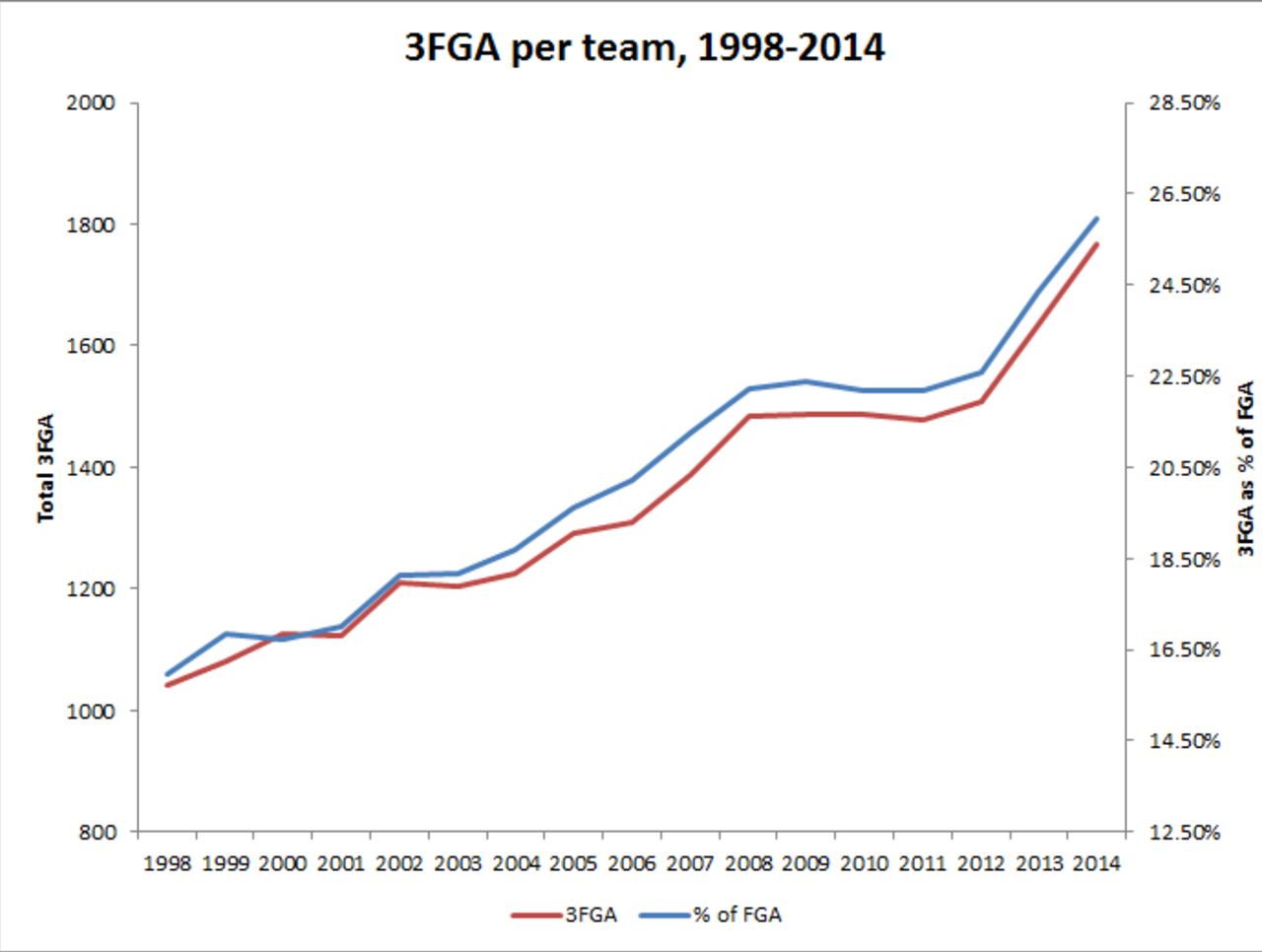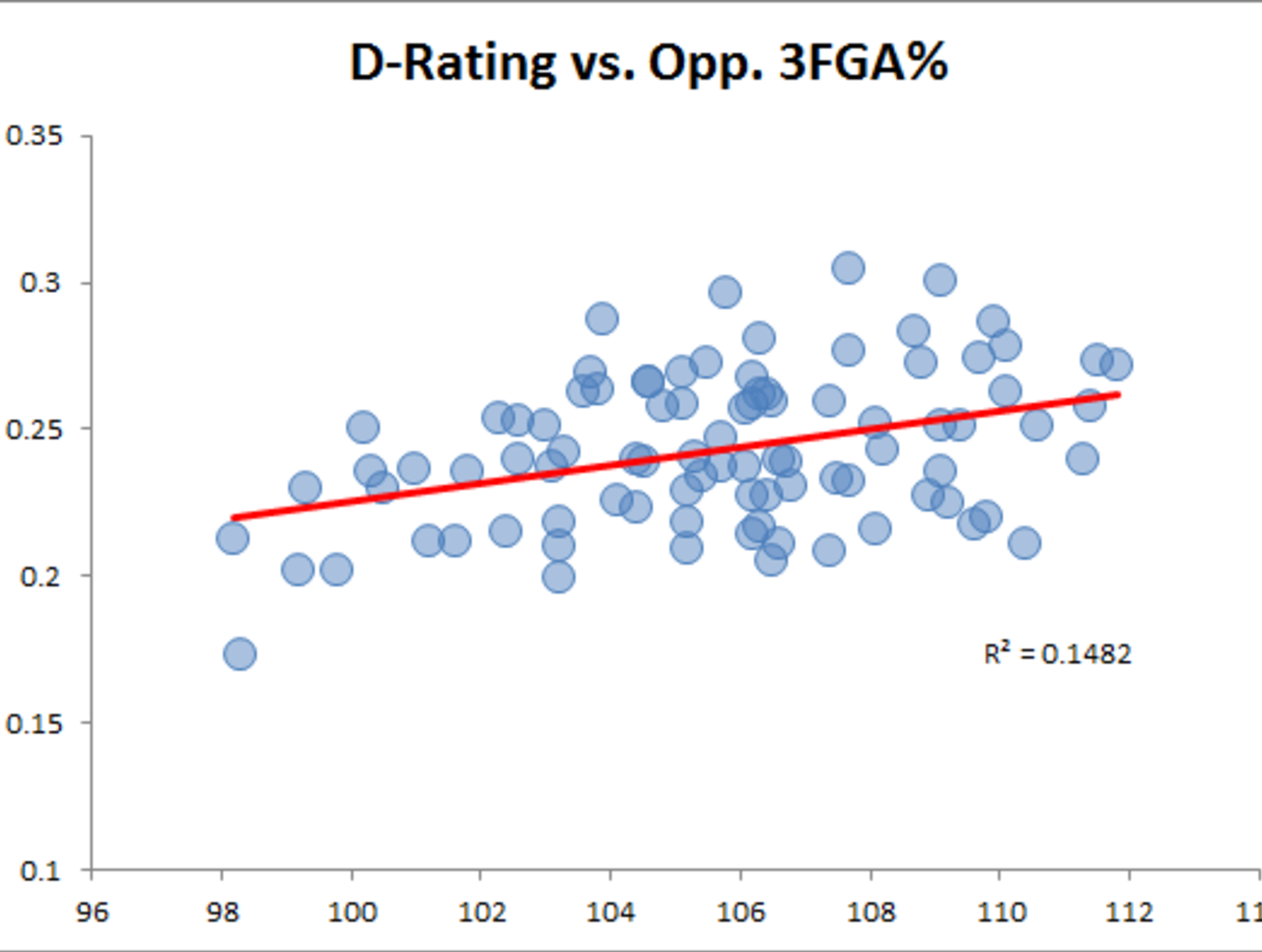The importance of defending the 3-point line
San Antonio Spurs head coach Gregg Popovich hates the 3-point shot. It's no surprise, then, that Popovich's team was the best in the NBA at limiting opponent 3-point attempts last season.
The Spurs, you may recall, were last season's NBA champions. While their offense justifiably drew rave reviews all through the postseason, their ability to keep teams inside the arc was paramount to their season-long reputation as a defensive force.
The Spurs raising yet another banner is as good a reason as any to explore the relationship between 3-point defense and overall defense; if teams are espousing the long-range shot as a more efficient proposition, chasing teams off the line should surely be a goal on defense.
Explosion of 3-Point Usage
Since moving the 3-point line back to 23 feet, 9 inches after a failed three-year experiment with a shorter line, the NBA has witnessed a steady rise in the number of three point shots. That holds for both the raw total of triples attempted, and the portion of all field goals that have come from long range:

Just a decade ago, teams would shoot a three just 18.7 percent of the time, a rate that's now pushed past one quarter of all attempts (26 percent). Ignoring the 3-point shot isn't an option, with the league's nine worst offenses all shooting a below-average proportion of 3-pointers.
Defending the 3
The rate at which opponents hit threes isn't really in a defense's control over the long run. While aggressive closeouts and strong rotations can make individual 3-point shots more difficult, the data suggests that, if a team wants to improve their 3-point defense, the best way to do so is by simply limiting their opponent's attempts.
To illustrate the impact of 3-point defense on overall defense, we pulled team seasons over the past three years and looked at the relationship between opponent 3-point attempts and D-Rating.

The relationship wasn't quite as strong as we expected, but an R-squared of 0.15, which means that about 15 percent of the variance in team defense can be explained simply by the number of threes a team allows, is still impressive. With factors like rim protection, scheme, player quality and more all going in to defense, 3-point attempts alone accounting for 15 percent of variance is notable.
The relationship between opponent 3-point percentage was stronger (an R-squared of 0.34), but again, this has shown to be a less controllable skill for teams - while there was a moderate correlation between 2012-13 and 2013-14 D-Rating (R-squared of 0.27), the relationship was completely null between 2012-13 and 2013-14 opponent 3-point percentage.
In the coming weeks, we'll explore the other defensive factors - rim protection, rebounding, and forcing turnovers in particular - to continue to get a handle on what teams should focus on at the defensive end of the floor.
HEADLINES
- Kerr: Timeout blowup with Draymond 'not my finest hour'
- Tatum-less Celtics are inspiring, Cavs are not, new anti-tanking measures
- NBA Christmas Day picks: Spurs-Thunder rematch headlines holiday card
- Former NBA 2nd-round pick Nnaji joins Baylor with immediate eligibility
- Spurs storm past Thunder for 2nd win over OKC in 10 days